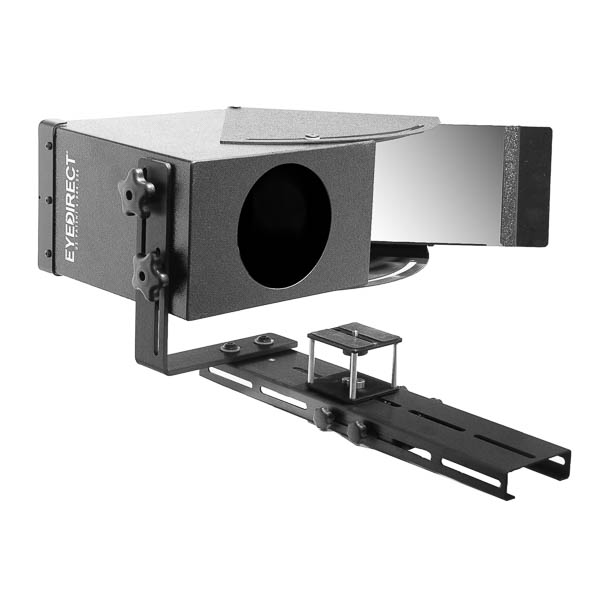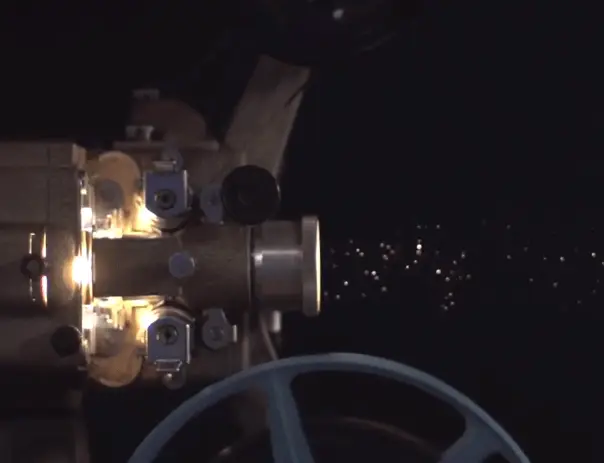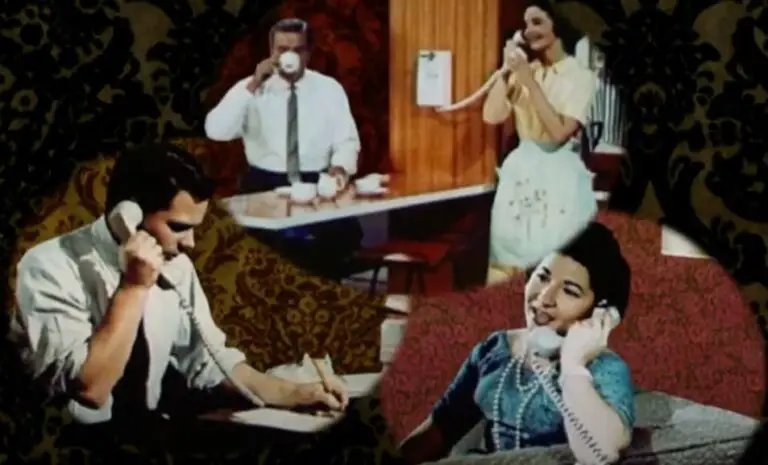At Cognitive Films, we’ve conducted hundreds of interviews, and we’re not exaggerating when we say that a single project might involve more than ten interviewees in one day. Being on camera can often make you self-conscious—some thrive under the spotlight, others need to be warmed up, and some appreciate a bit of coaching. Generally, because of our awesome interviewing style, our interviewees excel, comfortably sharing their insights on camera.
The Direct-to-Camera Approach
However, asking them to speak directly into the camera is a different challenge altogether. Most find it daunting, akin to staring into an abyss—a cold, judgmental lens that seems to pierce the soul.
From a viewer’s perspective, direct engagement feels more personal and compelling. The challenge has always been to replicate a face-to-face interview experience with subjects looking straight at the camera. Documentary filmmaker Errol Morris cracked this with his invention, the Interrotron. The device uses a modified teleprompter setup—not to display text, but to show Morris’s face, making it possible for interviewees to look directly into the camera lens while speaking to him. This breakthrough brought a genuine first-person connection to interviews.

Discovering the EyeDirect
Inspired by Morris’s approach, we sought a similar effect for our corporate interviews, where engagement is crucial. Fortunately, we discovered the EyeDirect. This innovative device uses a unique combination of mirrors and a beamsplitter, allowing interview subjects to see the interviewer’s face while looking directly into the camera’s lens. Steve McWilliams, who invented the EyeDirect in 1997, originally created a makeshift prototype from a pizza box and mirrors during a commercial shoot. This allowed a dog, PBS’s famous Wishbone, to look straight into the camera by seeing his trainer’s face reflected.
At Cognitive Films, EyeDirect has become an essential part of our toolkit, especially when we aim for engaging and compelling interviews. Its ability to “hide” the intimidating camera lens behind a comforting human image allows our subjects to relax and communicate more naturally. This not only improves the quality of the interviews but also enhances the viewer’s experience by providing the feeling of a face-to-face interaction.
Using the EyeDirect in Scripted & Training Content
Beyond traditional interviews, EyeDirect proves invaluable in various other settings. It’s perfect for situations where someone needs to deliver scripted lines directly to an audience, such as in training videos or promotional content. By allowing the speaker to see a person instead of a lens, EyeDirect facilitates a more natural delivery of lines and helps maintain direct eye contact with the audience, which is crucial for engagement and effectiveness.
The nonverbal cues gained from seeing a human face, rather than a lifeless camera, are invaluable for education and communication. The EyeDirect proves its versatility across various scenarios, making it a vital tool for anyone looking to enhance their video production quality. If you’re planning your next video project, consider the EyeDirect for a truly engaging experience.
Examples of Videos that Use Direct to Camera Interviews
EyeDirect has revolutionized the way we conduct interviews and create video content at Cognitive Films. Its ability to facilitate natural, engaging dialogue while maintaining direct eye contact with the camera continues to elevate the content we create. Here are a few examples of the productions we’ve used the EyeDirect system on.







